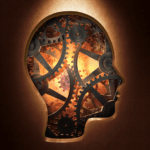Optimism and Cognitive Ability, two facets deeply intertwined within the complex tapestry of our brain’s functioning, present a fascinating paradox in the realm of neuroscience. While optimism is often hailed as a key to resilience and mental well-being, its relationship with cognitive ability reveals a more nuanced narrative. From a neuroscientific perspective, the brain’s intricate dance of neuroplasticity and the rewiring of neural pathways play pivotal roles in shaping our outlook on life. However, when optimism tilts into the realm of excess, it can inadvertently mask underlying cognitive challenges. This excessive positivity, often unnoticed, can lead to a skewed perception of reality, impacting decision-making processes and problem-solving skills.
In the following exploration, we delve into the three hidden dangers of excessive optimism, particularly when it intersects with cognitive ability. Our journey takes us through the neural corridors where optimism resides, examining how it can sometimes overshadow critical thinking and rational judgment. We’ll uncover how the brain’s natural inclination towards positive thinking, while generally beneficial, can become a double-edged sword in certain cognitive contexts.
Understanding the balance between optimism and cognitive ability is not just an academic exercise; it holds profound implications for personal development and mental health. By unraveling these hidden dangers, we aim to provide insights that empower individuals to harness the benefits of optimism while maintaining cognitive clarity and realism. Join us as we navigate this intricate interplay, guided by the latest findings in neuroscience.
The First Hidden Danger
Optimism and Cognitive Ability: Misjudging Risks and Challenges
When we delve into the intricate relationship between Optimism and Cognitive Ability, a critical aspect emerges the tendency to misjudge risks and challenges. This phenomenon, deeply rooted in the neural underpinnings of optimism, represents the first hidden danger of excessive positivity.
Optimism is associated with a brighter outlook on life, often leading to a more positive approach to various situations. However, when optimism overshadows realistic assessment, it can create a cognitive blind spot. This is particularly evident in how the brain processes information related to potential risks and challenges. Individuals with an overly optimistic view may have a cognitive bias that filters out negative information, leading to an underestimation of potential difficulties.
This cognitive bias, often referred to as the optimism bias, is a double-edged sword. On one hand, it can provide the mental resilience to face adversity; on the other, it can lead to a dangerous underestimation of risks. For instance, in financial decision-making, this bias might lead to overly risky investments or inadequate preparation for economic downturns.
Neuroscientifically, this misjudgment is linked to how neural pathways associated with optimism are wired and reinforced over time. The brain’s natural inclination towards positive reinforcement can sometimes override the more critical and analytical aspects of cognitive processing. This is where the balance between dispositional optimism and cognitive realism becomes crucial. Understanding this first danger is essential in recognizing the need for a balanced approach to optimism, one that incorporates a realistic assessment of risks and challenges, guided by cognitive ability and not just an optimistic disposition. To delve deeper into this concept, explore the transformative power of neuroplasticity in reshaping our cognitive processes.
The Second Hidden Danger
Optimism and Cognitive Ability in Distorted Decision-Making

The interplay between Optimism and Cognitive Ability takes a critical turn when we examine the second hidden danger: distorted decision-making. This danger emerges when excessive optimism influences the cognitive processes involved in making choices, leading to decisions that might not align with reality or long-term well-being.
Neuroscientifically, decision-making is a complex process involving various brain regions. It requires not only the assessment of information and potential outcomes but also the emotional and motivational contexts. When optimism is associated with cognitive processes, it can color these assessments with an overly positive hue. This leads to what is known as optimism bias, where individuals expect more favorable outcomes than what reality might suggest.
For example, in career or business decisions, this bias can lead to overconfidence in one’s abilities or the likelihood of success. While a certain degree of optimism is necessary for motivation and taking initiative, an imbalance can result in overlooking critical details, underestimating challenges, or failing to plan for potential setbacks. This phenomenon, where optimism skews decision-making, aligns with findings from a recent study highlighted by Neuroscience News, demonstrating how excessive optimism can lead to poor decision-making, particularly in financial matters.
The neural underpinnings of optimism play a role here. The brain’s reward system, which reinforces positive expectations and experiences, can sometimes overshadow the more analytical and cautious aspects of decision-making. This is where cognitive ability should ideally step in, offering a counterbalance to ensure that decisions are grounded in a realistic appraisal of situations.
Understanding this second danger highlights the importance of fostering a cognitive framework that balances optimism with critical thinking. It’s about training the brain to recognize when optimism is steering decisions too far from realistic probabilities and ensuring that optimism works in tandem with rational, well-informed thought processes. In this context, understanding the crucial role of emotional intelligence in managing and understanding our optimism becomes paramount. Moreover, examining how cognitive distortions can impact decision-making in leadership provides further insights into this complex dynamic.
The Third Hidden Danger
The Impact of Optimism and Cognitive Ability on Learning and Adaptation

In our exploration of Optimism and Cognitive Ability, the third hidden danger emerges as impaired learning and adaptation. This aspect underscores how excessive optimism can hinder the brain’s ability to learn from past experiences and adapt to new or changing environments.
Learning and adaptation are fundamental cognitive processes, deeply rooted in the brain’s capacity for neuroplasticity – the ability to rewire neural pathways based on new experiences and information. However, when optimism is associated with cognitive processing to an excessive degree, it can lead to a skewed interpretation of past events. This skewed interpretation often manifests as a dismissal of negative outcomes or failures as mere flukes, preventing the individual from fully learning from these experiences.
The optimism bias plays a significant role here. It can create a mental filter that magnifies positive outcomes and minimizes negative ones. While this can be beneficial in maintaining a positive outlook, it becomes a hindrance when it interferes with the ability to critically analyze and learn from past mistakes or challenges. For instance, in personal growth or professional development, an overly optimistic view might lead one to repeatedly encounter the same pitfalls without gaining meaningful insights or making necessary adjustments.
Neuroscientifically, this challenge is linked to how the brain integrates experiences into learning. The neural underpinnings of optimism, particularly how positive emotions and expectations are processed and reinforced in the brain, can sometimes overshadow the objective analysis and integration of experiences. Recognizing this third danger is crucial for anyone seeking to use optimism as a tool for personal and professional growth. It calls for a balanced approach where optimism is tempered with a realistic and critical assessment of experiences, ensuring that learning and adaptation are not compromised by an overly positive outlook. Delving into neuroplasticity and cognitive restructuring can provide valuable insights into achieving this balance.
Concluding Thoughts on Optimism and Cognitive Ability
Balancing Optimism with Cognitive Realism
In concluding our exploration of Optimism and Cognitive Ability, it becomes evident that while optimism is a valuable trait, its balance with cognitive realism is crucial for effective decision-making, learning, and adaptation. The three hidden dangers we’ve discussed – misjudging risks and challenges, distorted decision-making, and impaired learning and adaptation – highlight the importance of this balance.
From a neuroscientific perspective, the key lies in understanding and harnessing the brain’s capabilities for neuroplasticity. This involves consciously directing our neural pathways to foster a mindset that appreciates optimism but also values realistic and critical thinking. It’s about training the brain to recognize the fine line where optimism enhances our abilities without clouding our judgment.
The relationship between optimism and cognitive ability is not just a matter of psychological interest but has practical implications in our daily lives. Whether in personal aspirations, professional endeavors, or interpersonal relationships, the ability to balance optimism with a realistic assessment of situations can lead to more sustainable and fulfilling outcomes.
As we navigate through life’s complexities, let us embrace optimism as a beacon of hope and motivation. However, let’s also remain vigilant, ensuring that our optimism is grounded in the realities of our cognitive abilities. By doing so, we can make decisions that are not only hopeful but also informed and rational, leading to a life that is as rewarding as it is realistic.
#optimism-and-cognitive-ability #neuroscience-of-optimism #cognitive-bias #decision-making #neuroplasticity #optimism-bias #cognitive-psychology #brain-function #positive-thinking #risk-assessment #cognitive-processes #neural-pathways #behavioral-neuroscience #cognitive-ability #realistic-thinking #brain-and-emotion #optimism-in-psychology #cognitive-assessment #mental-health #positive-psychology


